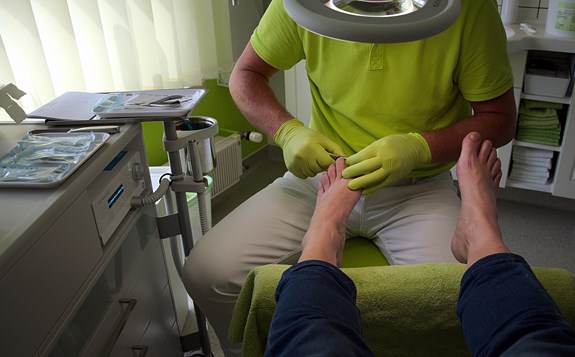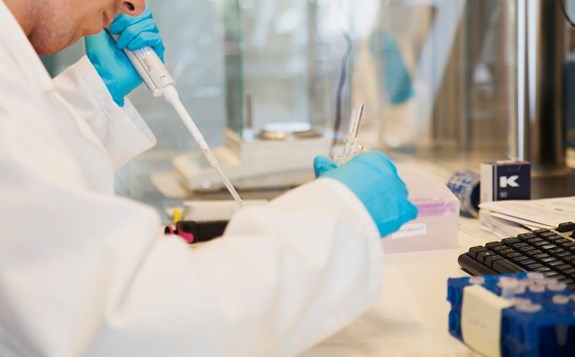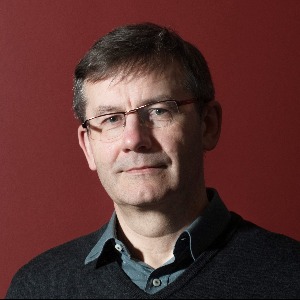We use cookies on this website. Cookies help us deliver the best experience on our website. Read about cookies.
-
- Education
- Education
- Programmes and courses
- Applications and admissions
- Tuition fees
- Scholarships
- Exchange studies at Malmö University
- Study Guidance
-
- After admission
- After admission
- Moving to Malmö
- Pre-orientation
- Arrival guide
-
- About studies at Malmö University
- About studies at Malmö University
- Why choose Malmö University
- Understanding university studies
- Connect with current students
On the page -
- Research
- Research
-
- Doctoral studies
- Doctoral studies
- Doctoral courses
-
- Doctoral schools
- Doctoral schools
- Education, Learning and Globalisation
- Doctoral school: Learning in Multicultural Societal Contexts
- Swedish National Graduate School in Science and Technology Education Research
- Doctoral school: Relevancing Mathematics and Science Education (RelMaS)
- Doctoral school: Sustainable Movement Education
- Finding ways in a time of great future challenges (FinnFram)
- Doctoral school: Pedagogy and Vocational Skills
- Doctoral school: Culturally Empowering Education through Language and Literature
- Research subjects
-
- Prominent research
- Prominent research
-
- Research centres
- Research centres
- Biofilms Research Center for Biointerfaces
- Malmö Institute for Studies of Migration, Diversity and Welfare
- Internet of Things and People
- Centre for Work Life and Evaluation Studies
- Centre for Sexology and Sexuality Studies
-
- Research publications
- Research publications
- Search publications
- Malmö University Press
- Research events
- Be part of research
On the page -
- Collaboration and Innovation
- Collaboration and Innovation
-
- Collaboration and external relations
- Collaboration and external relations
- Collaboration with students
-
- Collaborate with researchers
- Collaborate with researchers
- Labs and facilities
-
- Platforms, networks and projects
- Platforms, networks and projects
- Muvah
- Culture collaboration
- Innovation
- Support Malmö University
On the page -
- About us
- About us
-
- Job opportunities
- Job opportunities
- Current vacancies
- Meet our staff
- Employee benefits
-
- Faculties and departments
- Faculties and departments
-
- Faculty of Culture and Society
- Faculty of Culture and Society
- Department of Urban Studies
- Department of Global Political Studies
- School of Arts and Communication
-
- Faculty of Education and Society
- Faculty of Education and Society
- Department of Childhood, Education and Society
- Department of Sports Sciences
- Department of Natural Science, Mathematics and Society
- Department of School Development and Leadership
- Department of Culture, Languages and Media
- Department of Society, Culture and Identity
-
- Faculty of Technology and Society
- Faculty of Technology and Society
- Department of Computer Science and Media Technology
- Department of Materials Science and Applied Mathematics
- Faculty of Odontology
-
- Contact Malmö University
- Contact Malmö University
- Visit Malmö University
- Map of the buildings (Google Maps)
- Merchandise
- Whistleblowing
- News and press
- Management and decision-making paths
-
- Vision, objectives and strategy 2025
- Vision, objectives and strategy 2025
- Global engagement
- Sustainability
- Widened recruitment and participation
- Quality work at the University
- Apartments for researchers
-
- Malmö Academic Choir and Orchestra
- Malmö Academic Choir and Orchestra
- Student work - video pieces
- Alumni & Friends
- Annual Academic Celebration
-
- University Dental Clinic
- University Dental Clinic
- About the University Dental Clinic
- The University in a troubled world
On the page
Biofilms Research Center for Biointerfaces
for Biointerfaces
Biofilms Research Center for Biointerfaces is a multidisciplinary research centre in the interface between life and material sciences. Our vision is to shape novel solutions for improved health through excellent science in close partnership with industry. The centre’s activities focus on a wide range of phenomena associated with biointerfaces. The practical applications of the research are numerous and range from diagnostics to disease prevention and novel treatments.
News and events

Malmö Neptunigymnasium and BRCB initiate collaboration
On March 22, the secondary school and adult education administration signed a collaboration agreement with the research centre Biofilms Research Center for Biointerfaces (BRCB), Malmö University. The collaboration includes, among other things, that students at Malmö Neptunigymnasium are given the...
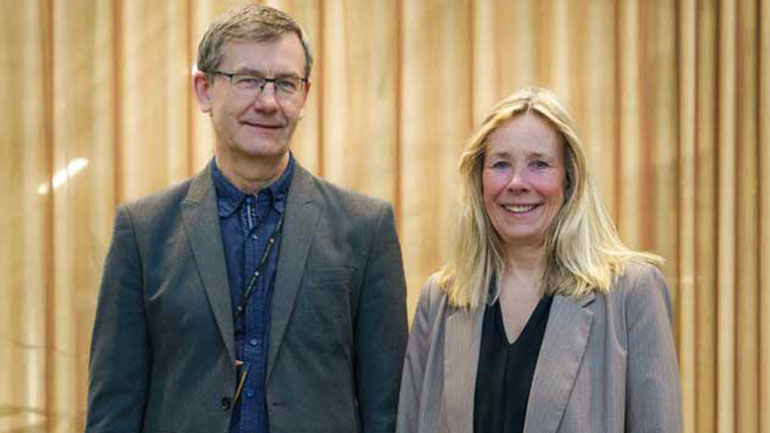
Malmö Neptunigymnasium and BRCB initiate collaboration
On March 22, the secondary school and adult education administration signed a collaboration agreement with the research centre Biofilms Research Center for Biointerfaces (BRCB), Malmö University. The collaboration includes, among other things, that students at Malmö Neptunigymnasium are given the opportunity to visit various university activities and environments and try out the equipment used by researchers and staff, through a week of workplace learning (WPL).
At BRCB, the focus is on developing new solutions for improved health through cutting-edge science in collaboration with industry. For example, Dr. Atefeh Shafaat has developed wireless biosensors that enable a more patient-controlled system, where infections can be detected much earlier through smart catheters, smart diapers, or smart wound dressings. Linn Piros, project manager at the secondary school and adult education administration, believes this gives students an insight into future healthcare. The plan is to offer ten students WPL placements starting in the spring term of 2025.
'The students here get a unique opportunity to follow research that can influence tomorrow's healthcare', says Linn Piros.
Anneli Schwartz, director of the secondary school and adult education administration, and Tautgirdas Ruzgas, director of BRCB and vice head of the BMV department, met to sign the agreement. The hope is to contribute to future solutions for improved health and competence supply within welfare and societal benefit.
Tautgirdas Ruzgas sees many benefits of the collaboration.
'We want to convey to younger generations what we do and why we exist. The students get to try out different things and feel what it's like in the workplace, which is important. We want to give something back so the younger generation can make an educated choice.'
Anneli Schwartz emphasizes the uniqueness of the collaboration:
'There are many professional roles and contributions to future development, in technology and health. This is something completely new. We remove the one-sided thinking about what career path secondary education programmes should lead to.'
Anneli Schwartz concludes that it is an important day for the Secondary and adult education administration. She explains that the agreement enables collaboration with a field of science they have not previously worked with.
-
 News | Published: 14 November 2023
News | Published: 14 November 2023
Wireless biosensors can relieve healthcare system burden
A wireless biosensor, developed by a Malmö University researcher...
-
 News | Published: 2 November 2023
News | Published: 2 November 2023
The joys of researching next door to two world-renowned largescale facilities
Two academics have high expectations of two largescale research...
-
 News | Published: 27 September 2023
News | Published: 27 September 2023
New smart solutions could replace current infection testing
New technology could pave the way to a future of rapid testing i...
-
 News | Published: 12 July 2023
News | Published: 12 July 2023
Cholesterol is only dangerous in the wrong company
We are increasingly aware of the concepts of good and bad...
-
 News | Published: 1 June 2023
News | Published: 1 June 2023
Researcher awarded fellowship at prestigious American university
An opportunity to strengthen his expertise awaits Anil Incel, a...
-
 News | Published: 3 May 2023
News | Published: 3 May 2023
Researchers investigate the vitamins in our beauty products
We know that dry skin can be relieved by creams containing...
-
 News | Published: 5 April 2023
News | Published: 5 April 2023
In search of a more effective mouthwash
A commonly used ingredient of prescribed mouthwash can lead to...
-
 News | Published: 26 January 2023
News | Published: 26 January 2023
Organisers of self-assembly of lipids ‘retreat and meet’ event looking forward to seeing you
Self-assembly of lipids served a vital role in the delivery of...
-
 News | Published: 26 January 2023
News | Published: 26 January 2023
In search of the optimal migraine medicine
In order for migraine medication to be effective, it is vital...
-
 News | Published: 19 January 2023
News | Published: 19 January 2023
New research project hopes to detect Parkinson's and cancer at an earlier stage
Denis Music, a professor at the Department of Materials Science...
-
 News | Published: 11 January 2023
News | Published: 11 January 2023
Detecting new virus variants is key
Annual vaccinations against seasonal flu have become a way to...
-
 News | Published: 27 October 2022
News | Published: 27 October 2022
Putting pea seeds under the microscope to find the food of the future
How do you create a plant-based steak with the perfect texture,...
-
 News | Published: 25 May 2022
News | Published: 25 May 2022
Malmö University prepares to receive a Ukrainian researcher
Malmö University is among a number of Swedish higher education...
-
 News | Published: 4 May 2022
News | Published: 4 May 2022
Alternatives to traditional methods for detecting skin cancer explored
An early diagnosis is crucial to be able to treat skin cancer...
-
 News | Published: 27 April 2022
News | Published: 27 April 2022
Heat waste an important part of the energy puzzle
As Europe faces an energy crisis, and warnings from scientists...
-
 News | Published: 22 April 2022
News | Published: 22 April 2022
Building competence to develop better biological medicine formulations
Solidification of protein components could increase the...
-
 News | Published: 20 April 2022
News | Published: 20 April 2022
New technology can make health checks easier and more accessible
Conventional health checks can be both time-consuming and contai...
-
 News | Published: 8 April 2022
News | Published: 8 April 2022
Understanding saliva could lead to better dental hygiene products
Salivary pellicles provide protection from a number of dental an...
-
 News | Published: 24 February 2022
News | Published: 24 February 2022
Plastic antibodies can find biomarkers for cancer
Sialic acid can be used as a biomarker for cancer and also plays...
-
 News | Published: 17 December 2021
News | Published: 17 December 2021
Investment contributing to a plant-based food future made
A new process for the production of nutritious vegan cheese is...
-
 News | Published: 23 November 2021
News | Published: 23 November 2021
New instruments to help researchers gain unique knowledge about cell wall surfaces
Swedish universities, institutes and companies collaborate on...
-
 News | Published: 9 November 2021
News | Published: 9 November 2021
“Fishing” for biomarkers could improve cancer diagnostics
Biomarkers can show if we carry a particular disease, detecting...
-
 News | Published: 3 November 2021
News | Published: 3 November 2021
Taking a “dive into water” to explore the future of sustainable skin therapies
Taking a “dive into water” and topical formulations has led a...
-
 News | Published: 25 August 2021
News | Published: 25 August 2021
Questions about cholesterol levels and Covid are being answered
Since the outbreak of the SARS-CoV-2 pandemic, the scientific...
-
 News | Published: 30 June 2021
News | Published: 30 June 2021
Saving lives by rerouting drug payloads
The concepts of 'drug payloads' and 'mRNA' have entered the...
-
 News | Published: 23 June 2021
News | Published: 23 June 2021
Biofilms — crucial research hub’s future is secured
Biofilms Research Center for Biointerfaces — a collaborative hub...
-
 News | Published: 28 May 2021
News | Published: 28 May 2021
Charge your devices with a sweaty run in the sun
Just imagine a wearable device that is powered by the sun you...
Research highlights
Washing method with environmental benefits
Washing method with environmental benefitsTo reduce greywater pollution and environmental pressure on aquatic ecosystems, it is important to investigate new washing and cleaning methods. A new study shows that washing with purified water only, is almost as efficient as using traditional washing with detergents.
Cholesterol affect Covid-19 binding
Cholesterol affect Covid-19 bindingCholesterol affects the extent of coronaviruses binding and fusion to cellular membranes. The severity of Covid-19 infection is correlated with lipid disorders. In this work, the Spike SARS-CoV-2 protein, which coats the SARS-CoV-2 virus, was shown to change how lipids are exchanged by HDL.
Non-invasive healthcare technologies
Non-invasive healthcare technologiesNon-invasive healthcare technologies are an important part of research and development due to the low cost and convenience offered to both patients/users and healthcare providers. This work overviews the recent advances in the field of non-invasive electrochemical biosensors operating in tears, sweat, saliva, and urine.
Facts and figures
Here, figures and facts for the year 2022 are compiled. People, partners, granted applications, distributed funds, projects and publications are presented.
Facts & Figures 2022: Biofilms Research Center
for Biointerfaces
Facts & Figures
- 14 Professors
- 51 PhD and Post docs
- 14 Assoc. Prof. and lecturers
Our research
Researchers at the centre include a wide range of experts from the fields of chemistry, biochemistry, materials science, cell and molecular biology, mathematics and microbiology. These experts, with overlapping interests, are advancing research in three core areas:
- biobarriers and pharmaceutical design;
- biofilms at interfaces; and
- smart material at interfaces.
Biofilms at interfaces
Microorganisms have a strong tendency to associate with surfaces and form adherent microbial communities, known as biofilms. Within this field, we study mechanisms by which bacteria adapt to and survive in the biofilm environment, as well as studying the salivary and mucosal barrier.
The research in detail
Biotherapeutics
Bacterial proteases are a driving force for the inflammatory responses involved in both periodontitis and cardiovascular disease. Our aim is to develop advanced technological tools based on an array of biomarkers (bacterial proteases and inflammatory mediators) to aid the identification of individuals at risk of severe alveolar bone loss disease, as well as the prediction and treatment of periodontal disease and associated inflammatory disorders.
Oral microbiology
In any environment, macromolecules and micro-organisms have a strong tendency to associate with surfaces and form adherent microbial communities, so-called biofilms, which are now recognised as the cause of most infectious diseases. Our goal is to understand the mechanisms by which oral bacteria acquire virulence in biofilms and to identify key points of intervention. We anticipate that our results will contribute to the development of future antimicrobials that target disease-inducing properties in biofilms rather than specific microorganisms.
Saliva research
Our main focus is the study of salivary pellicles — the film of nanometric dimensions that forms immediately upon contact of saliva with almost any type of surface. Pellicles play an important role in the maintenance of oral health, as they protect and lubricate oral surfaces. Our aim is to better understand the mechanisms underlying salivary lubrication. We also study the mechanisms underlying the protection offered by salivary pellicles against dental erosion and how this can be improved by complementing acidic beverages with anti-erosive compounds.
New methods and instruments
We are developing instruments that will allow structural studies of very thin and soft films under load and shear by means of neutron scattering and reflectometry. This is being carried out in collaboration with ESS and the two other big neutron facilities in Europe. We expect that this will be useful to apply in a broad range of fields, as soft-matter thin films are ubiquitous both in natural and artificial systems, for example, in the macromolecular layers that are often found at the solid/liquid interface in colloidal dispersions and biomedical implants.
Smart materials at interfaces
Smart materials at interfaces include bioelectronics (biosensors and biological power sources), oral implants and artificial biomimicry with biological applications.
The research in detail
Artficial biomimicry
Biomimicry (defined as the imitation of life or nature) is used in biomedicine and biotechnology to develop novel treatments and diagnostic methods. We focus on two major areas within biomimicry. The first being the development of novel diagnostic tools for cancer. And secondly, biomimetic systems for better understanding of the onset and treatment of diseases including atherosclerosis and bacterial infections.
Finding new and better ways to diagnose and treat cancer is one of a pressing task for researchers. Early diagnosis, where the cancer is still curable, is therefore crucial. This emphasises the need for sensitive, robust and affordable diagnostic tools that can sense the cellular state, commonly in the form of tumour-specific protein markers, early on in the process. We are developing and using molecularly imprinted polymers, plastic antibodies and other smart materials to detect and sense previously inaccessible tumour markers and discover novel disease biomarkers.
Biodegradable implants
The treatment of bone fractures and bone defects often requires the placement of metal plates or screws that joins the broken bones and allows them to heal. They are typically made of titanium or stainless steel, which functions well to stabilise the bone. However, as these plates or screws remain in the body, they can cause pain or other complications and often require the patients to undergo more surgery to remove the metal. We are studying implants made of magnesium – a metal with good mechanical properties – because it dissolves in
Biosensors and implantable bioelectronics
Research on biosensors and implantable bioelectronics is focussed on development of specific analytical devices and methods for monitoring clinically relevant analytes and biomarkers, as well as the development of potentially implantable electric power devices. It includes synthesis and characterisation of nanomaterials, development of novel sensing and power generating principles, as well as assessment of biosensor and biofuel cell performance in clinical and implantable situations. Our research strength lies in electrochemical sensors and enzymatic fuel cells. Lately, we have exploited biosensor approaches for the investigation of processes at biological barriers, tested enzymatic fuel cells in human blood under homeostatic conditions, as well as disclosed a new type of bioelectronic device – self-charging biosupercapacitors.
Cancer diagnostics
Finding new and better ways to diagnose and treat cancer is one of the most pressing tasks for researchers today. We use molecularly imprinted polymers to detect, sense and image previously inaccessible tumour markers and discover novel disease biomarkers with the aim of detecting cancer at an early stage.
Mathematical modelling
Scientific computing and simulations of phenomena on micro and macroscopic scales is a field of great scientific importance. General mathematical techniques, such as differential equations, combined with computational methods, allow a very broad range of applications. Our main focus is on three different areas: computational quantum physics; modelling of infectious diseases; and resonance spectrum for stratified media.
New methods and instruments
In collaboration with MAX IV, we are building sample environments to be used in tomography synchrotron beamlines. This will allow the study of how changes in the ambient conditions effect, for example, the structure and morphology of samples that have synthetic or biological origins. We are also developing methods for monitoring the interaction of formulations that comprise, for example, microparticles with biological barriers. These methods have a clear application in non-invasive drug delivery
Biobarriers and pharmaceutical design
Biobarriers and pharmaceutical design include pharmaceutical formulation, transdermal and mucosal drug delivery as well as hydration of biological interfaces, proteins and nanoporous materials.
Visit the project page for Biobarriers – Health, disorders and healing
The research in detail
Biobarriers
We focus on advancing the knowledge of the key physicochemical properties of biointerfaces, and how they determine the interactions with biomolecules in solutions. In order to achieve this, we develop biomimetic systems that aim at mimicking specific biobarriers in an easily producible and reproducible manner. The biobarriers we are interested in include cellular membranes, plant cell walls and blood vessels. Currently, we are applying these biomimetic systems to improve our understanding of the onset and treatment of various diseases such as atherosclerosis and bacterial infections.
Hydration of biological interfaces, proteins and nanoporous materials
The functional properties of biological materials and nanomaterials are strongly dependent on their interactions with the surrounding environment, where the presence of water in the form of liquid or vapour is inevitable. We have a special interest in nanoporous materials, such as mesoporous silica, and we study their hydration, characterisation and interactions with organic molecules and biomolecules. We also study the hydration of carbohydrate materials, such as cellulose. In the drug delivery field, we work with the interaction of solid excipients with water; hydration of proteins; hydration and phase transitions in lipids; and hydration of biological barriers.
Pharmaceutical formulation
In the development of transdermal and topical formulations, it is important to understand how formulation ingredients interact with the molecular components of the skin barrier and thereby influence its macroscopic barrier properties. Our research activities focus on the effects of commonly used excipients and other chemicals, such as penetration enhancers, on the molecular, as well as the macroscopic, properties of the skin membrane. We also investigate how nanomaterials, such as mesoporous silica particles, can be used in controlled release applications. The advantage of mesoporous silica, such as MCM-41 and SBA-15, is that these materials have remarkable properties due to their well-defined structure with tunable pore diameter and narrow pore size distribution, which can be optimised for loading and controlled release of drugs or biomolecules.
Transdermal and mucosal drug delivery
The skin barrier (the stratum corneum) is an effective permeability barrier. Despite this, the skin is an attractive alternative to the oral route for drug delivery because it avoids first-pass metabolic degradation, which can be an important advantage for certain drugs. Two common strategies to overcome the skin barrier for increased transdermal drug delivery are to increase skin hydration and add a penetration enhancer. Our research focuses on how hydration affects skin permeability, with and without penetration enhancers. Our approach is to combine several experimental methods to obtain both macroscopic and molecular-scale information on how hydration and penetration enhancers influence the stratum corneum.
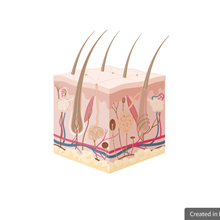
Biobarriers - Health, disorders and healing
Disorders of biological barriers such as skin and mucosa affect everyone from infant to elderly, and dermatological findings are often the first manifestations of systemic disease.
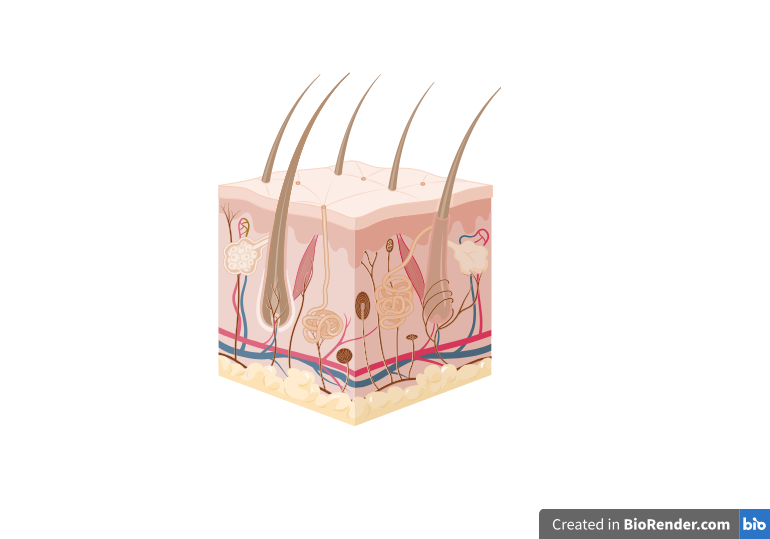
Biobarriers - Health, disorders and healing
Disorders of biological barriers such as skin and mucosa affect everyone from infant to elderly, and dermatological findings are often the first manifestations of systemic disease.
It is becoming more and more evident, that healthy biobarriers depend on the microbiota, physicochemical properties of mucosa or stratum corneum structure (the dead or less biologically active tissue), and an adequate immune defense mainly residing in the viable tissue.
In collaboration with industry, we are looking for solutions to improve the health and healing of biobarriers.
Biobarriers Scandinavian Hub
The profile will further expand existing collaboration with regional universities and industry to form a strong hub for topical drug delivery and biobarrier (skin, mucosa) research and education in Scandinavia.
Biobarriers: Insights
The Why and How of Ultrasmall Nanoparticles
The Why and How of Ultrasmall NanoparticlesUltra-small nanoparticles have very dynamic and reversible protein corona and thus immune cells cannot “see, or catch” them well. Ultra-small nanoparticle-protein interaction is very dynamic, similar to protein-protein interaction. This article might be important for your work with nanoparticles or teaching about nanoparticles.
Researchers, publications and projects
We are always interested in new collaborations with academia and industry. Please contact our researchers if you have any questions.
-
 Staff
StaffOlivia Aherne - Doctoral student
olivia.aherne@mau.se -
 Staff
StaffAhmed Al Musawi - Doctoral student
ahmed.almusawi@mau.se -
 Staff
StaffTiba Al-Dujaili - Doctoral student
tiba.al-dujaili@mau.se -
TAStaff
Thomas Arnebrant - Pro Vice Chancellor / Professor
thomas.arnebrant@mau.se -
JBStaff
Jonas Becktor - Associate Professor/Senior lecturer/senior dental officer
jonas.becktor@mau.se -
EBStaff
Eva Bengtsson - Associate Professor/Senior lecturer
eva.bengtsson@mau.se -
 Staff
StaffSebastian Björklund - Associate Professor/Senior lecturer
sebastian.bjorklund@mau.se -
 Staff
StaffMadeleine Blomqvist - Laboratory engineer
madeleine.blomqvist@mau.se -
EBStaff
Ekaterina Bogdanova - Postdoc
ekaterina.bogdanova@mau.se -
 Staff
StaffGabriella Boisen - Doctoral student
gabriella.boisen@mau.se -
 Staff
StaffMarite Cardenas - Professor
marite.cardenas@mau.se -
 Staff
StaffBruno Chrcanovic - Associate Professor/Project researcher
bruno.chrcanovic@mau.se -
 Staff
StaffGillian Dao Nyesiga - Doctoral student
gillian.dao-nyesiga@mau.se -
 Staff
StaffJulia Davies - Pro dean/Professor
julia.davies@mau.se -
 Staff
StaffRita Del Giudice - Senior lecturer
rita.del-giudice@mau.se -
 Staff
StaffJohan Engblom - Head of department/Professor
johan.engblom@mau.se -
 Staff
StaffGabriela Enggren - Senior lecturer
gabriela.enggren@mau.se -
TEStaff
Tommy Eriksson - Associate Professor/Professor
tommy.eriksson@mau.se -
 Staff
StaffInna Ermilova - Postdoc
inna.ermilova@mau.se -
MFStaff
Magnus Falk - Associate senior lecturer
magnus.falk@mau.se -
PFStaff
Peter Falkman - Senior lecturer
peter.falkman@mau.se -
AGStaff
Anette Gjörloff Wingren - Professor
anette.gjorloff-wingren@mau.se -
 Staff
StaffVasantha Gowda - Postdoc
vasantha.gowda@mau.se -
 Staff
StaffMagnus Gram - Senior lecturer
magnus.gram@mau.se -
 Staff
StaffPetri Gudmundsson - Senior lecturer/Associate Professor
petri.gudmundsson@mau.se -
 Staff
StaffAnna Gustafsson - Senior lecturer
anna.gustafsson@mau.se -
 Staff
StaffJohan Hektor - Associate senior lecturer
johan.hektor@mau.se -
 Staff
StaffAlexei Iantchenko - Professor
alexei.iantchenko@mau.se -
AIStaff
Anil Incel - Postdoc
anil.incel@mau.se -
HIStaff
Hanna Isaieva - Postdoc
hanna.isaieva@mau.se -
SJStaff
Skaidre Jankovskaja - Postdoc
skaidre.jankovskaja@mau.se -
 Staff
StaffThomas Janssens Hix - Doctoral student
thomas.janssens@mau.se -
SKStaff
Sumiyo Kanafusa - Project researcher
sumiyo.kanafusa@mau.se -
 Staff
StaffSana Khayyamifar - Doctoral student
sana.khayyamifar@mau.se -
 Staff
StaffVitaly Kocherbitov - Professor
vitaly.kocherbitov@mau.se -
 Staff
StaffJenni Koskinen Engstedt - Doctoral student
jenni.engstedt@mau.se -
 Staff
StaffAndreas Krause - Lecturer
andreas.krause@mau.se -
 Staff
StaffChristine Kumlien - Vice Dean/Professor
christine.kumlien@mau.se -
 Staff
StaffFredrik Leo - Doctoral student
fredrik.leo@mau.se -
 Staff
StaffSagar Ravishankar Maleyur - Doctoral student
sagar.maleyur@mau.se -
 Staff
StaffLindsay Richard Merte - Associate Professor
lindsay.merte@mau.se -
 Staff
StaffNadiia Mosiichuk - Postdoc
nadiia.mosiichuk@mau.se -
 Staff
StaffDenis Music - Professor
denis.music@mau.se -
 Staff
StaffEmelie Nilsson - Associate senior lecturer
emelie.nilsson@mau.se -
 Staff
StaffFavour Amarachi Nzekwe - Doctoral student
favour.nzekwe@mau.se -
LOStaff
Lars Ohlsson - Senior lecturer/Director of studies
lars.ohlsson@mau.se -
 Staff
StaffZdenka Prgomet - Program director/Associate senior lecturer
zdenka.prgomet@mau.se -
 Staff
StaffCarolina Robertsson - Doctoral student
carolina.robertsson@mau.se -
 Staff
StaffFelix Roosen-Runge - Associate Professor/Senior lecturer
felix.roosen-runge@mau.se -
 Staff
StaffTautgirdas Ruzgas - Assistant head of dep./Professor
tautgirdas.ruzgas@mau.se -
GSStaff
Grzegorz Sadowski - Doctoral student
grzegorz.sadowski@mau.se -
 Staff
StaffDavide Schirone - Postdoc
davide.schirone@mau.se -
 Staff
StaffBörje Sellergren - Professor, directly appointed
borje.sellergren@mau.se -
YSStaff
Yulia Sergeeva - Lecturer
yulia.sergeeva@mau.se -
 Staff
StaffOonagh Shannon - Senior lecturer
oonagh.shannon@mau.se -
 Staff
StaffSergey Shleev - Professor
sergey.shleev@mau.se -
 Staff
StaffThomas Sjöberg - Doctoral student
thomas.sjoberg@mau.se -
MSStaff
Maria Magdalena Stollenwerk - Senior lecturer
maria.stollenwerk@mau.se -
MSStaff
Michal Szczepanczyk - Doctoral student
michal.szczepanczyk@mau.se -
 Staff
StaffAndriani Tsompou - Doctoral student
andriani.tsompou@mau.se -
 Staff
StaffSabrina Valetti - Associate senior lecturer
sabrina.valetti@mau.se -
 Staff
StaffVedrana Vejzovic - Associate Professor
vedrana.vejzovic@mau.se -
 Staff
StaffClaes Wickström - Associate Professor/Sektionschef/Senior lecturer
claes.wickstrom@mau.se
-
2024 | Article in journal
Hydrogen bonding in glassy trehalose-water system: Insights from density functional theory and molecular dynamics simulations.
Vitaly Kocherbitov, Denis Music, Valera Veryazov
-
2024 | Article in journal
Pyodermatitis-pyostomatitis vegetans: a case report and systematic review focusing on oral involvement
Bruno Ramos Chrcanovic, Roberta Rayra Martins-Chaves, Flavia Sirotheau Correa Pontes, Felipe Paiva Fonseca, Helder Antonio Rebelo Pontes, Ricardo Santiago Gomez
-
2024 | Article in journal
Low Levels of Selenoprotein P Are Associated With Cognitive Impairment in Patients Hospitalized for Heart Failure
Amra Jujić, John Molvin, Erik D Nilsson, Hannes Holm Isholth, Anna Dieden, Johan Korduner, Amir Zaghi, Zainu Nezami, Andreas Bergmann, Lutz Schomburg, Martin Magnusson
-
2024 | Article in journal
Associations between plasma metabolism associated proteins and future development of giant cell arteritis: results from a prospective study
Karin Wadström, Lennart T H Jacobsson, Aladdin J Mohammad, Kenneth J Warrington, Eric L Matteson, Magnus E Jakobsson, Carl Turesson
-
2024 | Article in journal
Water Sorption and Structural Properties of Human Airway Mucus in Health and Muco-Obstructive Diseases.
Susyn J Kelly, Vladislav Genevskiy, Sebastian Björklund, Juan F Gonzalez-Martinez, Lara Poeschke, Maik Schröder, Georg Nilius, Stanislav Tatkov, Vitaly Kocherbitov
-
2024 | Article in journal
Affinity Capillary Electrophoresis as a Tool To Characterize Molecularly Imprinted Nanogels in Solution
Cecilia Contardi, Davide Rubes, Massimo Serra, Rossella Dorati, Marco Dattilo, Liliia Mavliutova, Maddalena Patrini, Raffaella Guglielmann, Börje Sellergren, Ersilia De Lorenzi
-
2024 | Doctoral thesis, comprehensive summary
Non-invasive biomedical analysis: recent advances, challenges, and future perspectives
Stefan Cirovic, Sergey Shleev, Petri Gudmundsson, Anders Kottorp, Annica Kristoffersson
-
2024 | Article in journal
Intervention for a correct medication list and medication use in older adults: a non-randomised feasibility study among inpatients and residents during care transitions
Ahmed Al Musawi, Lina Hellström, Malin Axelsson, Patrik Midlöv, Margareta Rämgård, Yuanji Cheng, Tommy Eriksson
-
2024 | Article in journal
Heteromultivalent Ligand Display on Reversible Self-Assembled Monolayers (rSAMs): A Fluidic Platform for Tunable Influenza Virus Recognition
Yulia Sergeeva, Sing Yee Yeung, Börje Sellergren
-
2024 | Article in journal
Association between low selenoprotein P concentrations and anaemia in hospitalized heart failure patients
Amra Jujic, John Molvin, Hannes Holm Isholth, Anna Dieden, Johan Korduner, Amir Zaghi, Zainu Nezami, Andreas Bergmann, Lutz Schomburg, Martin Magnusson
-
Research project
Being young and living with Inflammatory Bowel Disease – a national perspective
-
Research project
Biobarriers – Health, disorders and healing
-
Research project
Bioinspired drug carrier platform for inhalation therapy of antibiotic molecules
-
Research project
Biomimetic SARS-C oV-2 receptors as host cell models, diagnostic tools and for antiviral research
-
Research project
Biomimetic sensors for monitoring of Norovirus and SARS-CoV-2 genetic variants in water
-
Research project
Correct medication list at care transitions
-
Research project
Detection and sensing of predictive biomarkers for periodontitis
-
Research project
Enzymatic activity in oral biofilms – biotechnological applications and putative predictive biomarkers for oral health and disease
-
Research project
HEALTHCOM- Healthy communities in ageing societies – participatory research with elderly immigrants and refugees living in a Nordic...
-
Research project
Human mucosae: from molecular understanding to tissue engineering and novel therapeutic opportunities
-
Research project
Investigation of multivalent pathogen inhibition and sensing using rSAM-based decoy nanoparticles
-
Research project
Liproprotein structure-function and disease development: from atherosclerosis to covid-19
-
Research project
Multilayer architecture of H2O2 non-enzymic sensors for biomedical applications
-
Research project
Nanocapsules and recombinant proteins for nutritious vegan cheese making
-
Research project
Next generation of cancer models for improved predictivity in drug development – 3D colorectal cell growth with the use of supporting spide...
-
Research project
NextBioForm – Centre for formulation and processing of biologics
-
Research project
Porous drug carrier platform for inhalation of antibiotic molecules
-
Research project
Predictive Biomarkers for Periodontitis
-
Research project
Revert - Targeted therapy for advanced colorectal cancer patients
-
Research project
Simultaneous Scattering and Tribological Investigations of Sheared Thin Soft Matter Films under Low Pressure
-
Research project
Student participation in research teams – Vertically Integrated Projects (VIP) in Biomedical, Criminology and Care Science research
-
Research project
Towards controllable structuring processes of plant seed proteins
-
Research project
Washing and cleaning with purified water grades and the effects of water purity on properties of colloidal systems
Programmes and platforms
Organisation and Partners
Advisory Board
- Cristina Glad, CEO, Chairperson, C Glad Consulting AB
- Gunnel Svensäter, Professor of Oral Health, Faculty of Odontology
- Martina Kvist Reimer, Executive Vice President, Red Glead Discovery
- Sven Frökjaer, Vice-Dean, Faculty of Health and Medical Sciences, University of Copenhagen
- Thomas Arnebrant, Professor of Biointerfaces, Vice Dean, Faculty of Heath and Society
- Tomas Lundqvist, Senior Coordinator Research Infrastructures, RISE — Research Institutes of Sweden
- Ulf G Andersson, CEO, Medeon Science Park & Incubator
Industry partners
- A1M Pharma AB
- Adroit Science AB
- Akzo Noble Pulp and Performance Chemicals AB
- Alligator Bioscience AB
- Amano Enzyme Inc
- ArgusEye AB
- AstraZeneca AB
- BioGaia AB
- Bioglan AB
- Biotage AB
- Bona AB
- Camurus AB
- CapSenze HB
- Chemotechnique Diagnostics AB
- Chromalytica AB
- Corigo AB
Covercast AB
- CR Competence AB
- CTC Clinical Trial Consultants AB
- Dentsply A/S
- Enzymatica AB
- Erco Pharma AB
- Fisher & Paykel Healthcare Ltd
- Galenica AB
- Genovis AB
- GE Healthcare AB
- G&T Septech A/S
- Idogen AB
- ImaGene-iT AB
- IBM Svenska AB
- Iconovo AB
- In vitro Plant-tech AB
- KEMET AB
- Larodan AB
- Lipidor AB
- Magle Chemoswed AB
- MediGelium AB
- Nanologica AB
- Nordiska Dental AB
- Novosense AB
- Novozymes A/S
- Obducat Technologies AB
- Orexo AB
- Pampett AB
- PEAS Institut AB
- Perrigo Nordic AB
- Promimic AB
- Phase Holographic Imaging AB
- Proteome Sciences, UK
- QPharma AB
- ReSyn Biosciences, South Africa
- RISE AB
- RISE Acreo AB
Samsung, South Korea
- Scibase AB
- Siamab Therapeutics Inc
- Simris Alg AB
- Sobi AB
- SoftOx Solutions AS
- Speximo AB
- Stadex AB
- Sterisol AB
- Thermo Fischer, UK
- Timeline Bioresearch AB
- Truly Labs AB
- Truly Translational AB
- Zelmic AB
Connect with us
Open Lab Skåne
The underlying principle of Open Lab Skåne is sustainability; equipment should be shared, and its use maximised. At the same time, the ambition is to create a synergy between academia and industry.
Open Lab Skåne consists of three hubs: Biofilms Research Center for Biointerfaces at Malmö University, Food Technology at Lund University, and SmiLe incubator in Lund.
The project started in 2017 and is set to run until at least 2023.
How it works
Open Lab Skåne is built on the competencies found at the three hubs. When a company contacts us, they are forwarded to the area of expertise best suited for the purpose. At Biofilms Research Center, Open Lab focuses on materials science, chemistry and biological interfaces, at Lund University the focus is on food technology, and SmiLe is a life science incubator.
When companies first contact us, we engage in a dialogue about what they need. If we can meet their needs. We then go through practical issues such as costs for instruments, renting lab space and, in general, what they can expect from us.
Companies can also rent lab space or equipment.
So far, 43 companies have joined and are receiving support through the project.

Testimonials about Open Lab
Go Cirkulär started to use Open Lab in 2021. Small companies generally have difficulties getting access to a lab space in Skåne and Open Lab offers us this and allows us to uphold the highest health and safety standards for an affordable price.

Testimonials about Open Lab
Go Cirkulär started to use Open Lab in 2021. Small companies generally have difficulties getting access to a lab space in Skåne and Open Lab offers us this and allows us to uphold the highest health and safety standards for an affordable price.
Working at Open Lab helped Go Cirkulär to get access to technology, tools, and expertise that were key to the company's development.
Irene Atance – CEO & Founder
Go Cirkulär
Go Cirkulär manufactures high-quality skincare products that are upcycled, gender-neutral, and 100 per cent natural.
How did Open Lab work for you?
Go Cirkulär started to use Open Lab in 2021. Small companies generally have difficulties getting access to a lab space in Skåne and Open Lab offers us this and allows us to uphold the highest health and safety standards for an affordable price. For us, it was essential to have access to a lab to conduct R&D activities and this was key to the company's development. We are not only happy to have access to the lab space but also to different expertise from other entrepreneurs.
How did you use the lab in your work?
Go Cirkulär uses the lab for R&D purposes and to process our upcycled raw materials. Additionally, we conduct some tests and experiments with technology we borrow from Malmö University or other labs in the building. Open Lab is one of the very few networks within Skåne that makes both expertise and technology for small biotechnology companies accessible.
How was the collaboration useful?
Working at Open Lab helped Go Cirkulär to get access to technology, tools, and expertise that were key to the company's development. It was very useful for our company, and we hope to continue benefiting from it in the near future.

For us, Open Lab works very well. It's easy to book and get support and is obviously made for users who know how to use the instruments and how to interpret the results.
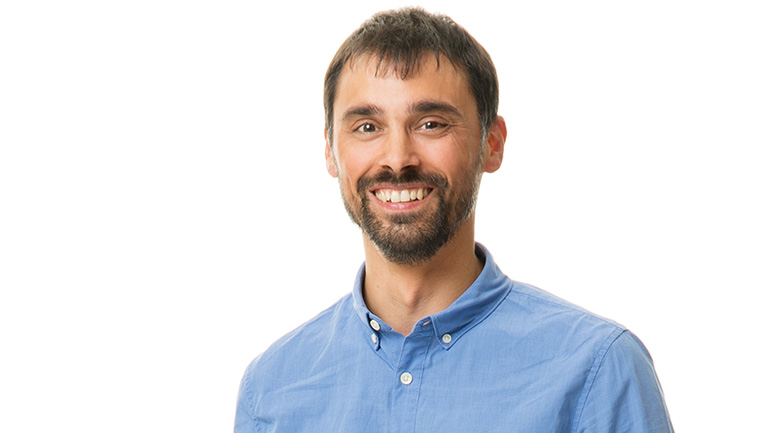
For us, Open Lab works very well. It's easy to book and get support and is obviously made for users who know how to use the instruments and how to interpret the results.
For us, Open Lab works very well. It's easy to book and get support and is obviously made for users who know how to use the instruments and how to interpret the results.
Roberto Ortiz – Senior Scientist, CR Competence
What does CR Competence do?
CR Competence is a consulting company specialised in helping our clients with issues related to colloidal systems, surfaces and physical chemistry. We help our customers with chemistry problems in their products or processes. We also perform scientific due diligence, work with product development, and with problem-solving.
How has the experience at Open Lab been for you?
For us, Open Lab works very well. It's easy to book and get support and is obviously made for users who know how to use the instruments and how to interpret the results.
We have used vpSEM-EDS in many of our projects. With that instrument, we can see what materials look like at the nanoscale and at the same time get chemical information from the surfaces. It has come into use in very different projects such as imaging the morphology of a powder for the pharmaceutical industry and for filters in a cooling system with corrosion problems.
How has Open Lab benefitted you?
Being able to access advanced measuring instruments without having to own one. Such instruments are really expensive. In our case, we only need to use them a few times a year and it wouldn't be financially viable to own one.







